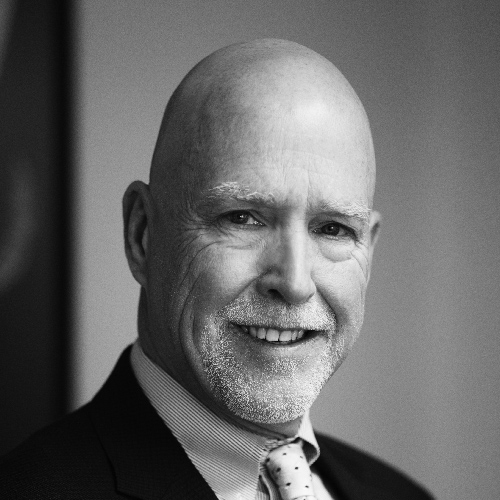Although the uncertain status of the Affordable Care Act (ACA) in 2017 obscures the future of American healthcare, it has already fostered many technological advances. And throughout that time, Bill Lovell has been in an enviable position, where he has been able to both observe and promote technology supporting the ACA.
As a VP at DXC Technology, he is in charge of the company’s Federal Health Segment. It’s a robust $700 million business that addresses the ways in which beneficiaries access and pay for life-saving and life-enhancing healthcare. That includes technology to support “the three Ps,” as Lovell describes them: providers, payers, and promoters, which include government agencies such as the Department of Veteran Affairs, the Defense Health Agency, the Centers for Medicare and Medicaid Services, the Food and Drug Administration, and the Centers for Disease Control and Prevention.
Healthcare constitutes about one-fifth of the nation’s gross domestic product. By comparison, the nation’s financial sector constituted about half of that, 10 percent, as of 2016. Both are rapidly growing sections of the country’s twenty-first-century economy, but healthcare lags behind banking and investing in achieving data interoperability.
“The financial community has standards that work worldwide,” Lovell says. “They have safeguards, with a set of interoperable standards that allow stakeholders to share data and interact with each other. We don’t have that in healthcare. Healthcare remains community-based.”
By community, he is referring to the silos of healthcare as administered by states—by agencies such as the Veterans Health Administration, Medicaid, and Medicare and by private insurers and private healthcare provider systems.
“We now have this wealth of new data being collected electronically. But we don’t have the same standards of interoperability.”
Anyone who has used these systems in recent years, which is just about everyone, has seen at least one technological advance: EHRs, for example, are a technology that Lovell notes was in place in only 7 percent of hospitals in 2008. By 2014, 75 percent had a basic EHR system with nearly all—97 percent—possessing certified, soon-to-deploy EHR technologies.
Lovell explains that a combination of penalties and incentives, driven by the Health Information Technology for Economic and Clinical Health Act of 2009 (HITECH, created by the 2009 economic stimulus bill), was largely responsible for this improvement. But although EHRs are exceptionally important and a good first step, it doesn’t complete the task. There are many great things to come for DXC Technology, as well as other industry players.
Emerging Technology
According to Bill Lovell, the Department of Veteran Affairs initiative to develop a Digital Health Platform (DHP) will bridge the gaps in episodic clinical data in the EHR with other untapped data sources. These sources include clinical data collected through mobile apps, patient portals, third-party repositories, consumer health, and tracking devices. DXC Technology is a leading innovator supporting the DHP.
Elsewhere, the Million Veteran Program (MVP), a longitudinal study that serves as a megabiobank and has been underway since 2011, is designed to develop precision medicine based on DNA. “By analyzing and documenting a veteran’s genetic code and then correlating the data found in VistA (the VA’s EHR), researchers can examine diseases and indicators that lead to a wealth of population health information,” Lovell says. DXC Technology, according to Lovell, is pleased to be a leading innovator for secured data analytics tools supporting initiatives, such as the MVP.
“We now have this wealth of new data being collected electronically,” Lovell says. “But we don’t have the same standards of interoperability.” In other words, though a person can use an ATM or credit card almost everywhere in the world, sharing records between two hospitals a mile apart from each other might still require phone calls, faxes, e-mails, and even paper documents.
Lovell says that interoperability is the next and probably most important step toward creating a twenty-first-century healthcare system. An April 2015 report called “Adoption of Electronic Health Record Systems among U.S. Non-Federal Acute Care Hospitals” from the Office of the National Coordinator for Health Information Technology, an agency under the US Department of Health and Human Services, concluded there are reasons to expect it to happen. “The increase in the rate of adoption for certified EHR technology sheds a positive light on hospitals’ progress toward the interoperable exchange of health information,” it says.
That information goes beyond what’s in an individual patient’s health records. DXC Technology is a proponent of the evolution of big data—specifically EHRs in combination with data from wearable devices, environmental and behavioral health determinants, and genomic and individual microbiota—to achieve predictive and prescriptive analytics. All of this requires the data to come together in one place and be accessed by duly authorized clinicians involved in a patient’s care.
Lovell adds that, along with interoperability, security also needs to be in place for the sharing of all those records. The Health Insurance Portability and Privacy Act of 1996 (HIPAA) requires that patient information be kept confidential. The penalties for HIPAA violations rose precipitously by way of HITECH and forced providers to simultaneously protect and share patient data.
It’s a technological problem calling for a technological solution. Lovell says there is no single solution but more of an overlay of security on products and programs.
But, in Lovell’s opinion, newer technologies can’t succeed by themselves. “The actual models for how we access and deliver healthcare are undergoing a paradigm shift from the traditional paternalistic health system focused on the healthcare provider to a more enlightened and informed system focused on the beneficiary, the healthcare patient,” he says.
Added to the mix is the debate on healthcare access and affordability. “We have to look at advancing healthcare technologies and the age demographics in the nation and figure out a way to pay for it,” he says, pointing out that the current rate of increase for healthcare costs is about 5.6 percent per year and that any compromise to the quality of healthcare delivery is unacceptable.
The societal acceptance issue is a related and familiar debate. Much of the country wants affordable healthcare access for all, while others rebel against the idea of mandatory participation in insurance pools. It’s a huge task to reconcile these philosophies, but a better aggregation of data can at least inform the debate.
Ultimately, Lovell says the digitization of all personal health information will empower the patient, removing the mystique of the provider and diminishing the control of payers. These results might not fully actualize in 2017 while national healthcare remains a political football. Regardless, the advances of propatient technologies are a near certainty.

